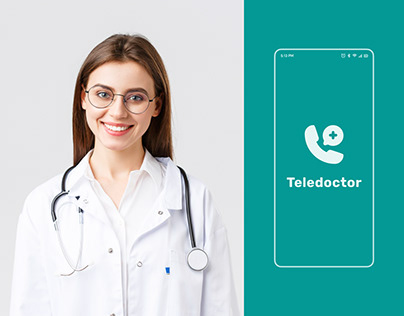Teledoctors: Reinventing Access to Medical Care Services
Teledoctors: Reinventing Access to Medical Care Services
Blog Article
Discovering the Perks and Challenges of Teledoctors in Modern Medical Care
As the medical care landscape develops, teledoctors have become an essential part in linking gaps in clinical gain access to and effectiveness. While they provide the guarantee of reaching remote areas and lowering functional expenses, the trip is not without its obstacles. Personal privacy problems, the electronic divide, and cybersecurity dangers position substantial obstacles that have to be addressed to harness their full capacity. Just how can the medical care industry balance these advantages with the fundamental obstacles? This problem invites a much deeper exploration right into the transformative function of teledoctors in shaping the future of medical care distribution.
Expanding Access to Treatment
Telemedicine has become a pivotal technology in modern-day healthcare, dramatically broadening accessibility to care for diverse populations. By leveraging digital innovation, teledoctors have actually changed the typical health care shipment design, making it possible for individuals in underserved or remote locations to get timely clinical assessment. This advancement is particularly beneficial for individuals living in country communities, where the shortage of health care facilities and professionals frequently brings about postponed or poor treatment.
Teledoctors contribute in linking the space created by geographical obstacles. Via digital examinations, individuals can access a vast array of healthcare solutions without the requirement for extensive traveling. This is specifically helpful for those with mobility issues or chronic conditions needing frequent medical interest. Moreover, telemedicine enhances continuity of care by making it possible for routine follow-ups and monitoring, thereby boosting patient results.
The combination of teledoctors into health care systems likewise supports the administration of public health situations by facilitating rapid action and triage. Throughout pandemics, for circumstances, online examinations reduce the concern on physical medical care facilities, reducing direct exposure threats for both patients and health care service providers. As telemedicine remains to evolve, it promises to improve the landscape of health care availability, making it more efficient and inclusive.
Cost-Effectiveness of Teledoctors
The cost-effectiveness of teledoctors is a considerable element driving their extensive fostering in healthcare systems. By lowering the requirement for physical framework and in-person check outs, teledoctors provide an even more budget-friendly option to standard healthcare delivery. This design enables healthcare suppliers to reduced functional costs, such as those linked with preserving physical workplaces and utilizing substantial on-site staff. teledoctors. Consequently, these savings can be passed on to clients in the form of minimized consultation charges, making healthcare more accessible to a more comprehensive population.
Additionally, teledoctors assist in an extra reliable usage of health care resources by lessening unneeded emergency clinic brows through and health center admissions. People can access prompt appointments for minor disorders or follow-up treatment, which helps to relieve the concern on overstretched medical care facilities. This efficiency not just leads to cost financial savings for doctor yet likewise minimizes the financial stress on individuals that might otherwise deal with pricey medical facility expenses.
Additionally, teledoctors can aid in handling chronic diseases better by supplying consistent tracking and prompt interventions. This proactive strategy can stop issues, thus decreasing lasting treatment expenses. Overall, teledoctors present a practical service to the intensifying expenses of health care, while keeping high quality care shipment.
Enhancing Person Ease
While cost-effectiveness plays a critical function in the surge of teledoctors, improving individual convenience stands as an additional engaging advantage of this medical care version. With the integration click to read more of teledoctors, individuals can bypass the traditionally time-consuming procedure of organizing and going to in-person consultations.
Additionally, teledoctors provide versatile organizing, enabling individuals to organize consultations at times that ideal fit their personal and professional commitments. This adaptability is very useful for people stabilizing requiring job schedules or household duties, making certain that healthcare can be integrated effortlessly right into their lives. Additionally, the ability to gain access to physician from the comfort of one's home can bring about boosted client engagement and adherence to therapy plans, as the barriers to looking for care are reduced.
The convenience supplied by teledoctors not just enhances the patient experience but also adds to an extra reliable and responsive healthcare shipment system, inevitably supporting much better wellness end results.
Addressing Personal Privacy Issues
Amidst the growing adoption of teledoctors, privacy issues become a substantial factor to consider. As medical care significantly depends on digital platforms, making certain the confidentiality of client information comes to be extremely important. The digitization of clinical documents and making use of telecommunication technologies necessitate robust protection measures to secure delicate data from unauthorized access and breaches.
Doctor need to follow stringent regulations, such as helpful hints the Medical Insurance Mobility and Accountability Act (HIPAA) in the USA, which establishes national requirements for protecting medical info. Compliance with such regulations is essential in maintaining client count on and ensuring their information is taken care of responsibly. File encryption of data, safe and secure communication networks, and routine audits are a few of the steps that can be executed to enhance data defense.
Despite these measures, challenges linger. Cybersecurity threats are developing, and healthcare organizations need to remain vigilant to brand-new susceptabilities. Furthermore, educating both people and doctor about best practices in data privacy is necessary. This includes understanding the restrictions of data and the value of secure login credentials. teledoctors.
As teledoctors come to be extra integral to healthcare shipment, dealing with personal privacy issues is vital to guarantee both the effectiveness and dependability of these solutions.

Navigating the Digital Split
Linking the digital divide is an essential difficulty in the widespread adoption of teledoctors. teledoctors. This divide incorporates differences in access to electronic innovation, specifically among country, low-income, and elderly populaces. These groups commonly do not have the essential tools, trusted web connectivity, or digital literacy needed for reliable participation in telehealth services. Consequently, the advantages of teledoctors-- such as raised availability and benefit-- stay inaccessible for several people who might most benefit from them.
Efforts to alleviate this divide demand a multi-faceted strategy. Policymakers must focus on framework development to improve internet access in underserved locations. Furthermore, initiatives to subsidize innovation for low-income families can play a crucial role in ensuring fair access. Medical care providers and community organizations need to collaborate to supply electronic literacy programs, empowering clients to browse telehealth systems with confidence. Additionally, designing straightforward user from this source interfaces can even more boost ease of access for all demographics, particularly the elderly.

Verdict
The assimilation of teledoctors into modern health care offers considerable benefits, consisting of enhanced accessibility to care, cost-effectiveness, and boosted individual ease. Nevertheless, challenges such as personal privacy worries, the electronic divide, and cybersecurity hazards need to be resolved to take full advantage of these advantages. By executing robust information defense procedures, improving electronic literacy, and making certain safe and secure technical framework, the possibility of teledoctors can be totally recognized, promoting fair healthcare delivery and changing the healthcare experience for all individuals.
Report this page